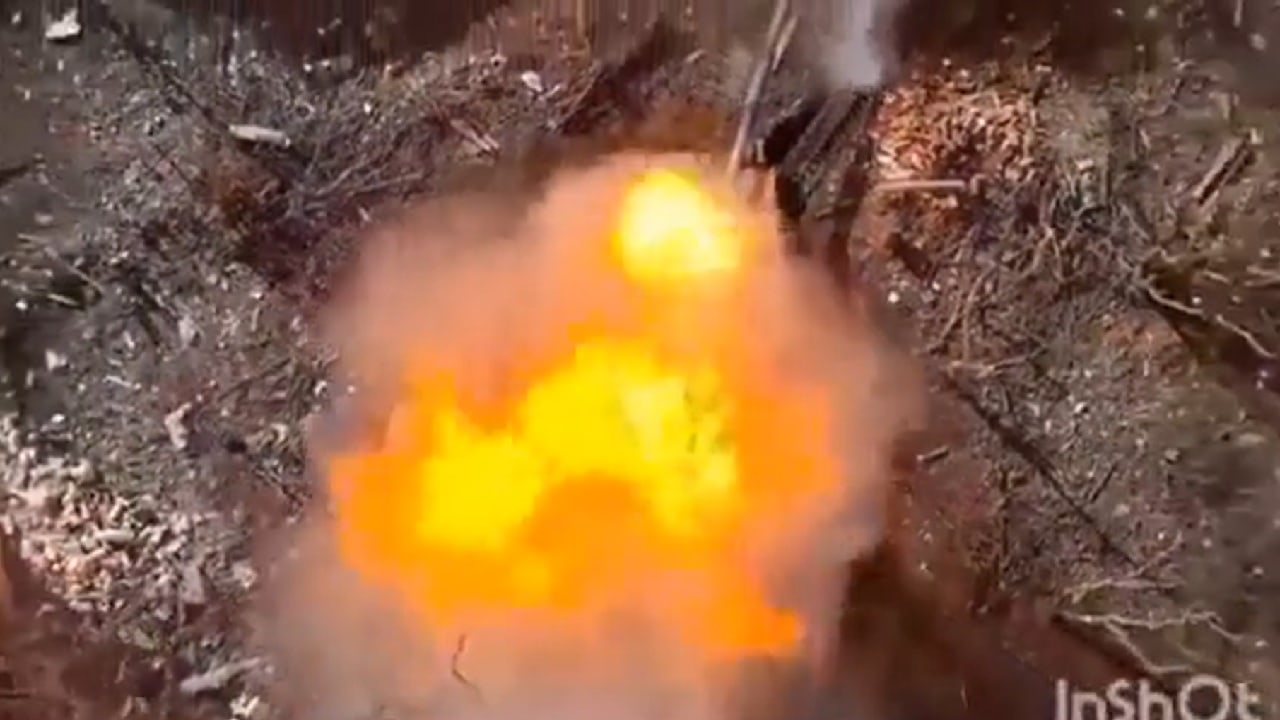Just how powerful is Ukraine’s military arsenal?
When Kyiv was attacked and invaded by Russia, many experts thought Ukraine couldn’t survive. And today, Kyiv now sports one of the most powerful militaries in Europe.
We know one thing is clear: social media continues to feed us intel on what happens next:
Ukraine Hits Russian Forces with Loitering Weapons
A Ukrainian “loitering munition” – or what many call kamikaze drones – didn’t do much loitering.
Instead, it could be seen in a short video posted to social media striking a Russian Ural cargo truck in Eastern Ukraine. The video was shared on Twitter by the open-source intelligence group OSINTtechnical (@OSinttechnical) on Wednesday.
The incident occurred on a paved highway, and the truck was likely bringing supplies to Russian forces. The Ural-4320 is a general-purpose 6×6 vehicle that offers off-road capability. Introduced in 1976, it remains in production – and is the primary truck used to transport Russian military cargo and troops. It is able to accommodate upwards of 27 soldiers or up to 12 tons of cargo.
The Ural-4320 is powered by a YaMZ-740 10.85-liter V8 diesel engine, developing 210 hp, and is able to reach a top speed of 85 km/h (52 mph).
Every Truck is a High-Value Target
Though much has been made of the losses of Russian tanks and other armored vehicles in Ukraine, the fact remains that even at the start of the war more than 15 months ago the Kremlin lacked enough trucks to move men and material for a full-scale invasion.
The role of trucks in wartime simply can’t be overstated. The Kremlin has had to rely on trains to move supplies but trains obviously can’t reach the frontlines.
“No other European nation uses railroads to the extent that the Russian army does,” U.S. Army Lieutenant Colonel Alex Vershinin wrote on War on the Rocks in the fall of 2021 – months before Moscow began its unprovoked invasion. But that does little good if the fighting isn’t close to a railhead.
“The Russian army does not have enough trucks to meet its logistic requirement more than 90 miles beyond supply dumps,” Vershinin added.
Too Few Trucks is a Lingering Problem
The truck problem has become greater as Russia has tried to advance deep into enemy territory. It isn’t just the moving of men, but of food, water, and ordnance. All of this has to be trucked in, and the shortage of trucks became readily apparent in the opening weeks of the war. The attack on Kyiv that failed last year was in part due to the fact that Russian brigades had to roll in material and other supplies from a main railhead in Gomel, Belarus.
“Everything that an army needs to do its thing comes from a truck,” Trent Telenko, a former quality control auditor for the United States Defense Contract Management Agency told CNN last year.
He further underscored the significance of trucks in a modern conflict.
“The weapon isn’t the tank, it’s the shell the tank fires. That shell travels by a truck,” Telenko noted.
Thus the loss of another Russian truck means that not only won’t the Kremlin’s forces receive whatever it was carrying, but it will make it that much harder for those troops on the ground to further receive their supplies. That makes trucks as valuable a target as tanks. Even with the right ordnance, the Russian tanks are being destroyed in shocking numbers.
Ukrainian rear-area FPV loitering munition strike on a Russian Ural cargo truck. pic.twitter.com/rsQhrl7ytp
— OSINTtechnical (@Osinttechnical) June 8, 2023
Yet, without shells for the main gun, the Russian tanks are just mobile metal coffins.
Author Experience and Expertise
A Senior Editor for 19FortyFive, Peter Suciu is a Michigan-based writer. He has contributed to more than four dozen magazines, newspapers, and websites with over 3,200 published pieces over a twenty-year career in journalism. He regularly writes about military hardware, firearms history, cybersecurity, politics, and international affairs. Peter is also a Contributing Writer for Forbes and Clearance Jobs. You can follow him on Twitter: @PeterSuciu.

